Best 1 Person Tent For Backpacking Ultralight 2024
Last Updated: April 7, 2024
Recommendations for the best Lightweight & Ultralight 1 Person Tent for backpacking
Solo hikers have so much to gain by choosing an ultralight 1 person tent for backpacking. Carrying a smaller shelter means less weight on your back, which allows you to move faster, farther, and/or more comfortably. These premium, best-in-class models are stormy-worthy, lighter and more spacious than average, and will serve you well from overnights to thru-hikes, and everything in between.
This guide covers recommendations for lightweight freestanding models, as well ultralight, trekking pole-supported shelters. Weight savings are critical for soloists, thus we highly recommend choosing a lightweight, or ultralight 1 person tent from among the following models, rather than something heavy and over-engineered. For a majority of hiking, our editorial staff prefer trekking pole-supported tents, and find them versatile and easy to set up. Happy camping!
We also cover backpacking tents sized for two, which are more versatile and are sometimes only marginally heavier than a 1 person tent, while offering palatial volume when used solo. And now that you’re here, don’t miss our guides to 3 person tents, 4 person tents, tarps, pyramid tents, and ultralight freestanding tents.
You make Adventure Alan & Co possible. When purchasing through links on our site, we may earn an affiliate commission at no additional cost to you. Here’s why you can trust us.
1 Person Tent for Backpacking Quick Picks
Freestanding Lightweight 1 Person Tents (↓)
- Best Freestanding: Big Agnes Copper Spur HV UL 1
- Freestanding Runner Up: NEMO Dragonfly OSMO 1
- Best Semi-Freestanding: Big Agnes Tiger Wall UL 1
- Semi-Freestanding Runner Up: NEMO Hornet OSMO 1
- Most Bomber: SlingFin Portal 1
- Best Under $200: REI Co-op Trailmade 1
Ultralight 1 Person Tents (↓)
- Editor’s Choice: Zpacks Offset Solo
- Top Pick: Durston X-Mid Pro 1
- Top Pick: Hyperlite Mountain Gear Mid 1
- Lightest Weight: Zpacks Plex Solo
- Best Value Ultralight: Gossamer Gear The One
- Best Value/Comfort: Six Moon Designs Lunar Solo
1 Person Tent for Backpacking Comparison Table
| Tent | Price ($) | Weight (oz) | Int Area (ft²) | Vest Area (ft²) | Height (in) | Int. Area Per Pound (ft²) |
| Zpacks Plex Solo | 599 | 13.9 | 20.6 | 8.0* | 52 | 23.7 |
| Durston X-Mid Pro 1 | 654 | 15.5 | 20.0 | 22.0 | 45 | 19.2 |
| HMG Mid 1 | 599 | 16.8 | 21.0 | 12.0* | 54 | 20.0 |
| Gossamer Gear The One | 255 | 17.7 | 16.3* | 10.0 | 45 | 14.7 |
| Zpacks Offset Solo | 669 | 18.8 | 23.5 | 12.5 | 48 | 20.0 |
| Six Moon Lunar Solo | 260 | 26.0 | 26.3 | 8.5 | 49 | 16.2 |
| NEMO Hornet OSMO 1 | 400 | 29.0 | 20.6 | 7.3 | 39 | 11.4 |
| Big Agnes Tiger Wall 1 | 400 | 30.0 | 19.0 | 8.0 | 39 | 10.1 |
| NEMO DragonFly OSMO 1 | 430 | 33.0 | 20.3 | 10.0 | 40 | 9.8 |
| Big Agnes Copper Spur 1 | 430 | 34.0 | 20.0 | 9.0 | 38 | 9.4 |
| SlingFin Portal 1 | 490 | 40.0 | 19.3 | 9.8 | 41 | 7.7 |
| REI Trailmade 1 | 179 | 56.0 | 20.0 | 9.5 | 41 | 5.7 |
*Our estimate, manufacturer does not list this info
Big Agnes Copper Spur HV UL 1
Big Agnes Copper Spur HV UL1 is the quintessential 1 person tent for backpacking, done extremely well. Arguably, it is the best overall and most well-rounded lightweight freestanding tent on the market. Enjoy top of the line headroom, thanks to the spreader bar and near-vertical sidewalls and head end wall. While the overall height is fairly standard, it feels bigger inside than it actually is.
Convert the dual-zipper vestibule into an awning using your trekking poles for maximum ventilation on warm rainy days. And while you’re hanging out in there, you’ll enjoy an exceptional volume of mesh pocket space to store all your nighttime doodads. This is a great 1 person tight and we recommend it highly.
- Price: $430
- Weight: 34.0 oz
- Interior Area: 20.0
- Vestibule Area: 9.0 ft²
- Int. Area/Pound: 9.4 ft²
- Height: 38 in
- Fly Material: Sil Nylon
- Pros: Lightweight. Fully free-standing. Full size awning vestibule. Great interior storage pockets. Vent. Vertical side walls and head end wall. Good headroom.
- Cons: Not ultralight.
NEMO DragonFly OSMO 1
The NEMO DragonFly OSMO 1 is one of our favorite lightweight freestanding tents, second only to Copper Spur. It’s built with great materials, including the sustainable and sag-resistant OSMO fabric (better than the Big Agnes fly fabric), and name-brand, high quality DAC Featherlite Poles.
Compared to Copper Spur, it has basically the same interior area, vestibule, area, weight, and price. The main difference being that it does not have quite as much interior volume due to the more sloping configuration of the foot end, and the vestibule cannot be lofted into awning-mode.
DragonFly also features a bevvy of features including the gear loft, nightlight pocket, complimentary Y-stakes, and modular packing cubes. A great tent!
- Price: $430
- Weight: 33.0 oz
- Interior Area: 20.3 ft²
- Vestibule Area: 10.0 ft²
- Area/Pound: 9.8 ft²
- Height: 40″
- Fly Material: OSMO sil/pu poly-nylon blend
- Pros: Freestanding. Lightweight. Sag-resistant fabric
- Cons: Sloping foot-end.
Big Agnes Tiger Wall UL 1
Choose the Big Agnes Tiger Wall UL 1 for a best-in-class blend of low weight, high ceiling, and value. Thanks to the near-vertical side walls and head end wall, this 1 person tent feels more spacious than the fairly average 19 ft² interior area would imply. It’s just got more usable headroom than other tents in its weight class. Built into the canopy you’ll find some nice interior storage in addition to a mesh pocket above the bathtub floor.
Mind you, this is a semi-freestanding design, meaning the ridgeline pole does not trace all of the way to the foot corners, and requires staking out for a taught pitch. A small decrease in versatility and storm-worthiness, but the weight savings are usually worth it. Compared to our other favorite BA tent, the Copper Spur, Tiger Wall is lighter and less expensive, but has fewer features, isn’t freestanding, and is less sturdy in high wind. It’s a bit heavier than the NEMO Hornet, but more livable thanks to the superior head room.
- Price: $400
- Weight: 30.0 oz
- Interior Area: 19.0 ft²
- Vestibule Area: 8.0 ft²
- Area/Pound: 10.1 ft²
- Height: 39 in
- Fly Material: Sil Nylon
- Pros: Very lightweight. Good headroom.
- Cons: Semi-freestanding. Middling storm-worthiness.
NEMO Hornet OSMO Ultralight 1
For hikers who spend more time hiking and less time chillaxing in the tent, we recommend the NEMO Hornet OSMO Ultralight 1. This tent is the lightest weight model in the freestanding/semi-freestanding category, and achieves its impressive stat-line by sacrificing some poles and canopy material. Hornet’s strong suit is not livability or comfort. That is to say, the sloping sidewalls and end walls result in less useable headroom and the ridgeline pole does not fork to the corners, requiring campers to stake it out for a fully taught pitch (hence the semi-freestanding designation).
We’re keen on the the proprietary OSMO nylon-polyester blend, which doesn’t sag when wet, and is made with recycled materials. All in all, this tent is perfect for hikers wanting to cover long distances without sacrificing the ease and familiarity of a pole-based design.
Also consider the Hornet Elite OSMO, an even lighter and more expensive version, with lighter and less durability materials, built onto the same chassis configuration.
- Price: $400
- Weight: 29.0 oz
- Interior Area: 20.3 ft²
- Vestibule Area: 7.3 ft²
- Area/Pound: 11.4 ft²
- Height: 39 in
- Fly Material: OSMO recycled Nylon-Polyester blend
- Pros: Very lightweight. Limited sag when wet. Good floor area. Sustainable.
- Cons: Semi-freestanding. Less than average useable headroom/sloping side walls.
SlingFin Portal 1
If you’re choosing a 1 person tent for backpacking in stormy conditions, wind, or snow, we recommend the SlingFin Portal 1. This engineering masterpiece is simply more bomber than the competition thanks to its DAC Featherlite NFL 8.7mm and 9.3mm cross-pole setup, reinforced with internal guylines to prevent lateral torsion. But they didn’t skimp on creature comforts either. The wide spreader bar allows for beyond-vertical side walls that seriously amp up the headroom. A bevy of mesh pockets built into the canopy add storage and prevent clutter.
We love the use of best-in-class sil/sil nylon. A standard tent fly would be treated with silicon and polyurethane, but the double silicone is stronger, more waterproof, and longer lasting thanks to improved UV-resistance. SlingFin is a brand specializing in mountaineering and winter tents, so you know the Portal has your back when the weather takes a turn for the worse. We designate their Portal series as 3+ season, and it’s the most storm-worthy 1 person tent for backpacking on our list.
- Price: $490
- Weight: 40.0 oz
- Interior Area: 19.3 ft²
- Vestibule Area: 9.8 ft²
- Int Area/Pound: 7.7 ft²
- Height: 41 in
- Fly Material: Sil/Sil Nylon
- Pros: Bomber in wind, rain, and snow. Freestanding. Full size vestibule. Best-in-class fly fabric. Good headroom and pockets.
- Cons: Not lightweight. Expensive. Unusual tensioning hardware.
REI Co-op Trailmade 1
Not everyone has budgeted $400 for a top of the line 1 person tent, which is why we endorse the REI Co-op Trailmade 1 as the top entry level pick. It’s the best value option for soloists looking to save money, and gets rave user reviews to boot. This simple, cross pole design is a tried and true freestanding pitch, as versatile as it is simple. While it lacks a spreader bar and all four walls lean inward reducing useable headroom, it’s still overall quite spacious, with a full-size interior, vestibule, and peak height.
They even added a pair of vents overhead to reduce condensation build up and it comes with a complimentary footprint/ground pad. The downside to all of this? It’s the heaviest tent on our list, by far, thanks to the durable-but-low-tech materials. For those willing to carry a bit extra weight in order to spend less money, Trailmade 1 is the solo tent for you.
- Price: $159
- Weight: 56.0 oz
- Interior Area: 20.0 ft²
- Vestibule Area: 9.5 ft²
- Int Area/Pound: 5.7 ft²
- Height: 41 in
- Fly Material: Polyester
- Pros: Very affordable. Durable. More spacious than average. Complimentary footprint. Vents.
- Cons: Heavy. All walls slope inward.
Zpacks Offset Solo
If you’ve ever felt cramped in a 1P tent, Offset Solo is your ticket to spreading out comfortably (Shop now). This two-door, two-vestibule ultralight DCF trekking pole shelter offers best in class features, truly exceptional interior volume and floor area, and easily accommodating wide pads, tall hikers, and plenty of gear. It is a top tier performance option for solo hikers, thru-hikers, and fastpackers.
Think of the Offset Solo like a tricked out, 1P version of the famous Duplex. It’s a bit narrower to account for being a solo tent, but still wide enough for a 25″ wide pad with room to spare on the sides, and 94″ long so you can keep your pack at your feet. The interior is very, very spacious!
Unlike most 1P models, Offset Solo is a dual-apex pitch, meaning it goes up with two trekking poles instead of pyramid style. Ergo, two doors, two vestibules, significantly better air flow, and less brushing of wet sidewalls. The namesake offset-ness of this tent refers to bumping the ridgeline back a bit towards the head end, which greatly increases the amount of headroom above where you actually sit up. The carbon fiber end strut adds convexity over your sleeping bag’s footbox. Read more in our full length Zpacks Offset Solo Review.
- Price: $749
- Weight: 18.8 oz (with end strut)
- Interior Area: 23.5 ft²
- Vestibule Area: 12.0 ft²
- Int Area/Pound: 20.0 ft²
- Height: 48 in
- Fly Material: Dyneema
- Pros: Ultralight. Best-in-class materials. Largest interior area in 1p category. Exceptional headroom. Vents. Magnetic toggles. Made in USA. Complimentary DCF dry bag.
- Cons: Expensive. Can’t be pitched alone if you snap a trekking pole. Small vestibules. Head-end storm side of storm doors cannot roll up.
Durston X-Mid Pro 1
The relatively new-to-market Durston X-Mid Pro 1 is certainly one of the most innovative and the highest volume models among top tier ultralight Dyneema tents, and a great option for soloists and thru-hikers. This dual-apex design stands out for its two-vestibule, two-door pitch, which allows for max ventilation and gear storage. No wonder it spends a majority of the year sold out.
The massive rectangular exterior footprint houses a parallelogram shaped interior, closed off with bug mesh. The ridgeline runs an offset diagonal between two of the four corners, which creates an optimal amount of usable headroom above the camper. While a dual apex pitch offers more usable volume than pyramids, there is a bit of risk for soloists who will be S.O.L. if they snap a trekking pole in the field.
Geometry aside, the X-Mid also delivers on creature comforts with magnetic door roll-ups, dual ceiling vents, and dual interior mesh pockets. We also note how the fly pitches low to the ground to seal out wind in stormy conditions. There’s been quite a debate surrounding sil-nylon vs Dyneema floors. FWIW, we prefer the DCF version.
- Price: $654
- Weight: 15.7 oz
- Interior Area: 20.0 ft²
- Vestibule Area: 22.0 ft²
- Int Area/Pound: 19.2 ft²
- Height: 45 in
- Fly Material: Dyneema
- Pros: Ultralight. Best-in-class materials. Innovative parallelogram shape. Largest vestibule space in category. Sturdy in wind.
- Cons: Frequently unavailable. Expensive. Solo hikers can’t set it if they snap a trekking pole.
Hyperlite Mountain Gear Mid 1
New for 2023, the HMG Mid 1 (shop now) is an ultralight, single-pole pyramid tent with a bevy of great features, including the large floor plan, large vestibule, Dyneema fabric, magnetic door closure, and full bug mesh enclosure. The 21 ft² floor plan is larger than average, and the 54″ peak ceiling is taller than average.
However, like all single-pole pitch tents, it suffers from sloping side walls that reduce usable interior volume. That being said, most hikers will still find plenty of room to sit up, as long as they stay close to the center pole (which is the natural place to do so). We recommend utilizing the additional guy out points to pull the side walls up and away from the inside, which helps remedy this somewhat.
In testing this tent, we found the wind resistance to be admirable (pyramids are famously strong), but were annoyed with how the bathtub floor seems to sag and flatten as you role around inside. We haven’t hat problems with the zipper, but note that it bears the ridgeline tension. Nonetheless, HMG fans should rejoice! Mid 1 rounds out their shelter lineup exceptionally well, and is their best 1 person tent for backpacking, by far. Learn more in our full-length Hyperlite Mountain Gear Mid 1 Review.
- Price: $599
- Weight: 16.8 oz
- Interior Area: 21.0 ft²
- Vestibule Area: 12.0* ft² (our estimate)
- Int Area/Pound: 20.0 ft²
- Height: 54 in
- Fly Material: Dyneema
- Pros: Ultralight. Best-in-class materials. Large floor plan. Sturdy in wind. Vents. Door magnets.
- Cons: Expensive. Zipper bears tension. 3 sloping side walls reduce usable interior area. Bath tub floor sags.
Zpacks Plex Solo
For the lightest weight, fully enclosed bug-proof shelter, we recommend the Zpacks Plex Solo. The weight savings are due in large part to its use of best-in-class Dyneema fabric. And like the HMG Mid 1, this is a single pole pyramid design that is sturdy in the wind, but suffers from sloping sidewalls that reduce usable headroom around the perimeter.
The Plex Solo has been one of, if not the most popular tents on the PCT for ages, and has been tested and proven on many a thru-hike. What’s more, it’s also available in a longer/taller version called the Zpacks Altaplex, which accommodates hikers up to 6’6″. All in all, the Plex Solo is an exceptionally ultralight, genre-defining trekking pole shelter that comes very highly recommended from respected thru-hiker brand.
- Price: $599
- Weight: 13.9 oz
- Interior Area: 20.6 ft²
- Vestibule Area: 8.0 ft²
- Int Area/Pound: 23.7 ft²
- Height: 52 in
- Fly Material: Dyneema
- Pros: Ultralight. Lightest fully enclosed 1P tent available. High bathtub floor. Best-in-class materials. Tall version available (Altaplex). Sturdy in wind.
- Cons: Expensive. 3 sloping side walls reduce usable interior area. Rainbow zipper entry.
Gossamer Gear The One
For the best value among 1 person ultralight tents for backpacking, we point you towards Gossamer Gear The One. This is dual apex shelter that pitches with two trekking poles and a perpendicular ridgeline. Great headroom! It’s constructed with a proprietary sil-nylon fabric optimized for weight savings, low volume, and waterproofness.
The configuration offers great ventilation. Think of it like your standard issue two person trekking pole tent, only narrowed to accommodate one hiker, and delete one vestibule, instead replacing it with a large, beaked overhanging vent. Just make sure to pitch the vestibule side, not the beak-side, into the wind. The floor plan is dynamic, with 33″ of width at the head end (quite wide) and 21″ at the foot end (quite narrow). While the total interior floor plan is smaller than average, it’s still wide enough to fit a wide tapering pad with a bit of room to spare around the top. Bottom line, we almost can’t stress enough how great of a value this tent is for the price.
- Price: $255
- Weight: 17.7 oz
- Interior Area: 16.3 ft²
- Vestibule Area: 10.0 ft²
- Int Area/Pound: 14.7 ft²
- Height: 45 in
- Fly Material: Sil/PU Nylon
- Pros: Ultralight. Good ventilation. Incredible value, great buy. Low bulk when packed. Good headroom.
- Cons: Small interior floor plan. Pitch can loosen when sil-nylon gets wet and sags. Solo hikers can’t set it up if they break one of their trekking poles while hiking. Beaked vent side cannot be pitched windward.
Six Moon Designs Lunar Solo
Last but definitely not least, the Six Moon Designs Lunar Solo is the largest and most livable tent in our buyer’s guide. And when we say large, it’s interior floor area is more than 25% larger than average, and that in addition to a full size vestibule. That being said, much of the useable headroom is lost due to sloping sidewalls, an issue faced by all single pole pitch tents. But on the plus side, the pyramid shape is extra sturdy in the wind.
Part of what keeps the price down on this 1 person tent for backpacking is the use of silicone treated polyester, rather than much fancier and much more expensive Dyneema. Sil-ny and Sil-poly are both prone to stretching out a bit when wet, so you may want to tighten the pitch right before you retire. Despite the very-light-but-not-technically-ultralight weight (we draw the line at 1.5 lbs/24 oz), the Lunar Solo is so voluminous that it still delivers a very respectable 21.4 ft² area-to-weight ratio. And seriously, this tent has won more awards and accolades than we can count, and the fact that it costs only $260 makes it a killer bargain. Do yourself a favor and pony up an extra $35 for the seam sealing service; you won’t regret it.
- Price: $260
- Weight: 26.0 oz
- Interior Area: 26.3 ft²
- Vestibule Area: 8.5 ft²
- Int Area/Pound: 16.2 ft²
- Height: 49 in
- Fly Material: Sil Polyester
- Pros: Very lightweight. Best-in-class interior volume. Incredible value. Vent. Sturdy in wind.
- Cons: Light-not-ultralight. Approaching 2p ultralight tent territory. 3 sloping side walls reduce usable headroom. Seam taping not included
1 Person Tent For Backpacking Conclusion
We’ve hope you’ve found what you’re looking for among our most highly recommended lightweight and ultralight 1 person tent options for backpacking and hiking. In our experience, these are the cream of the crop; the very finest available for soloists. Happy camping, and happy trails!

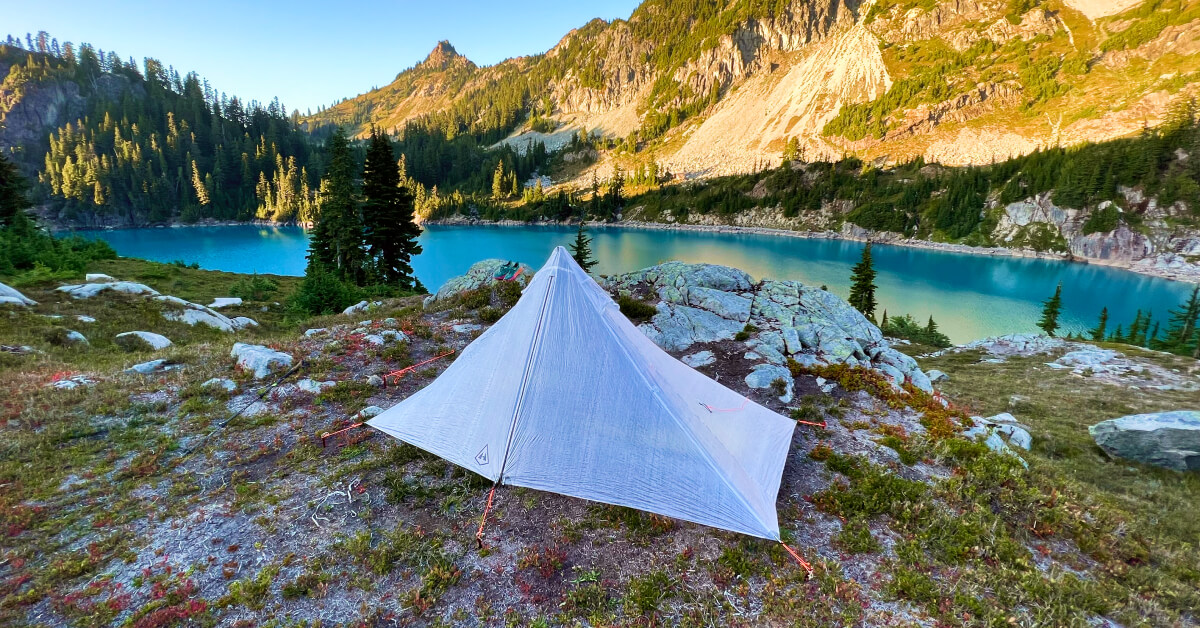
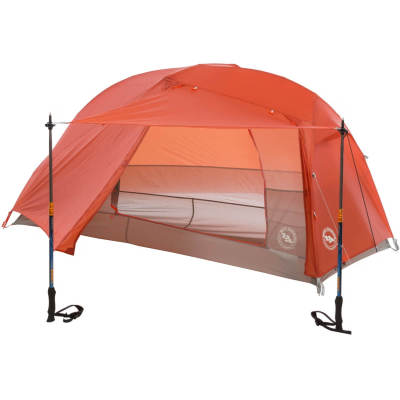
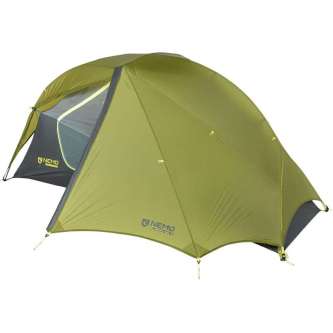
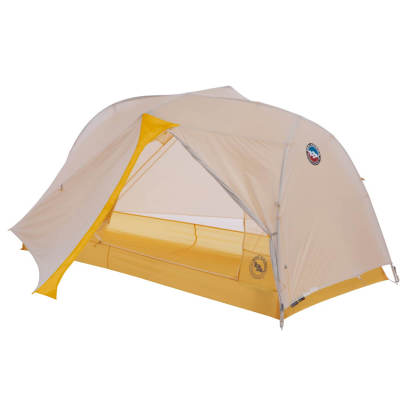
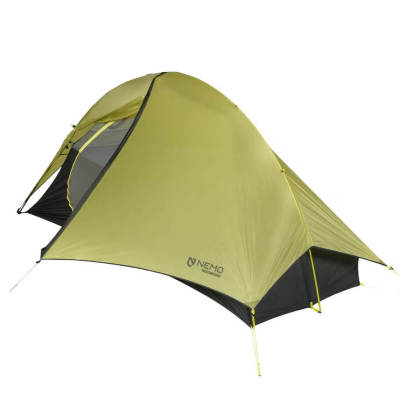
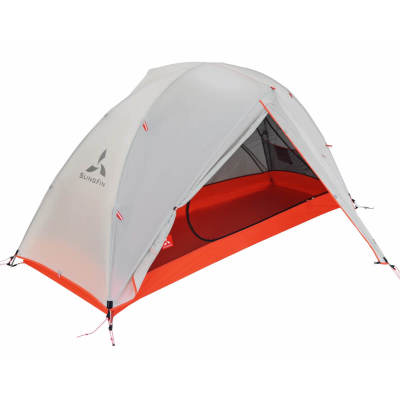
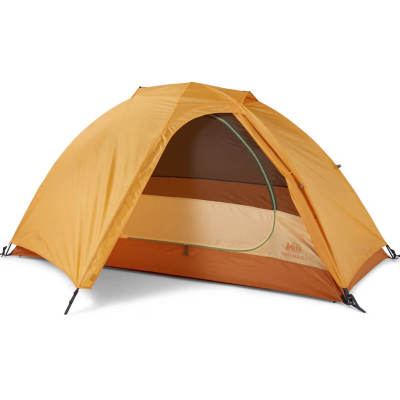
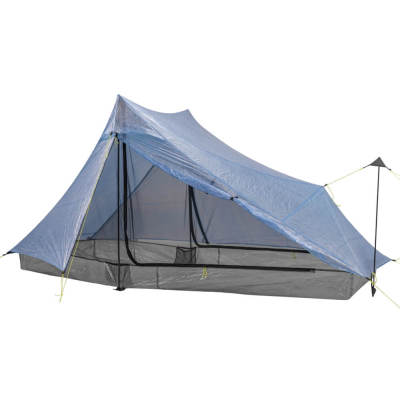
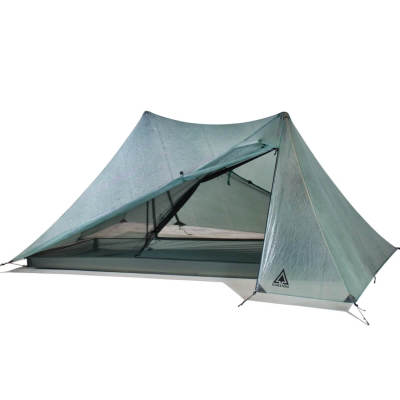
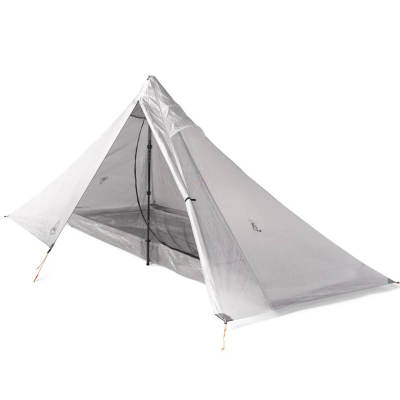
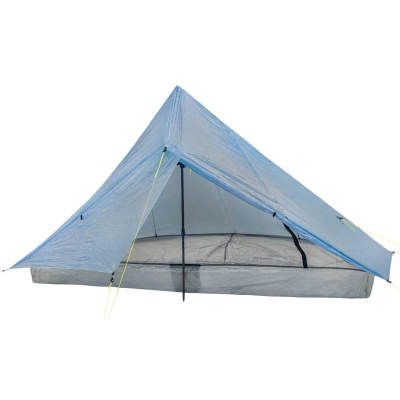
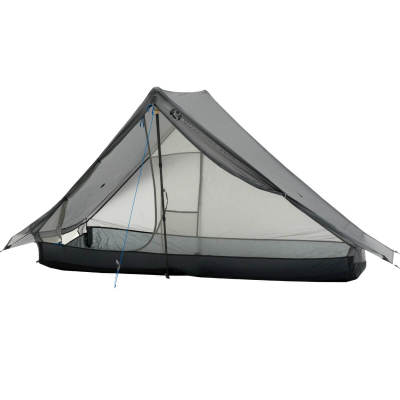
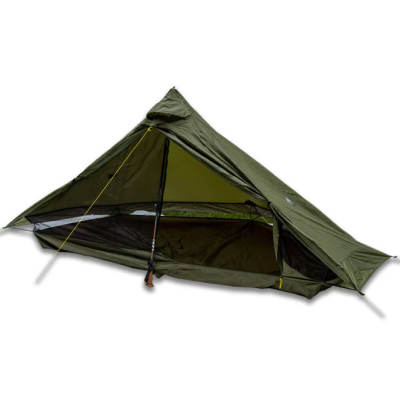
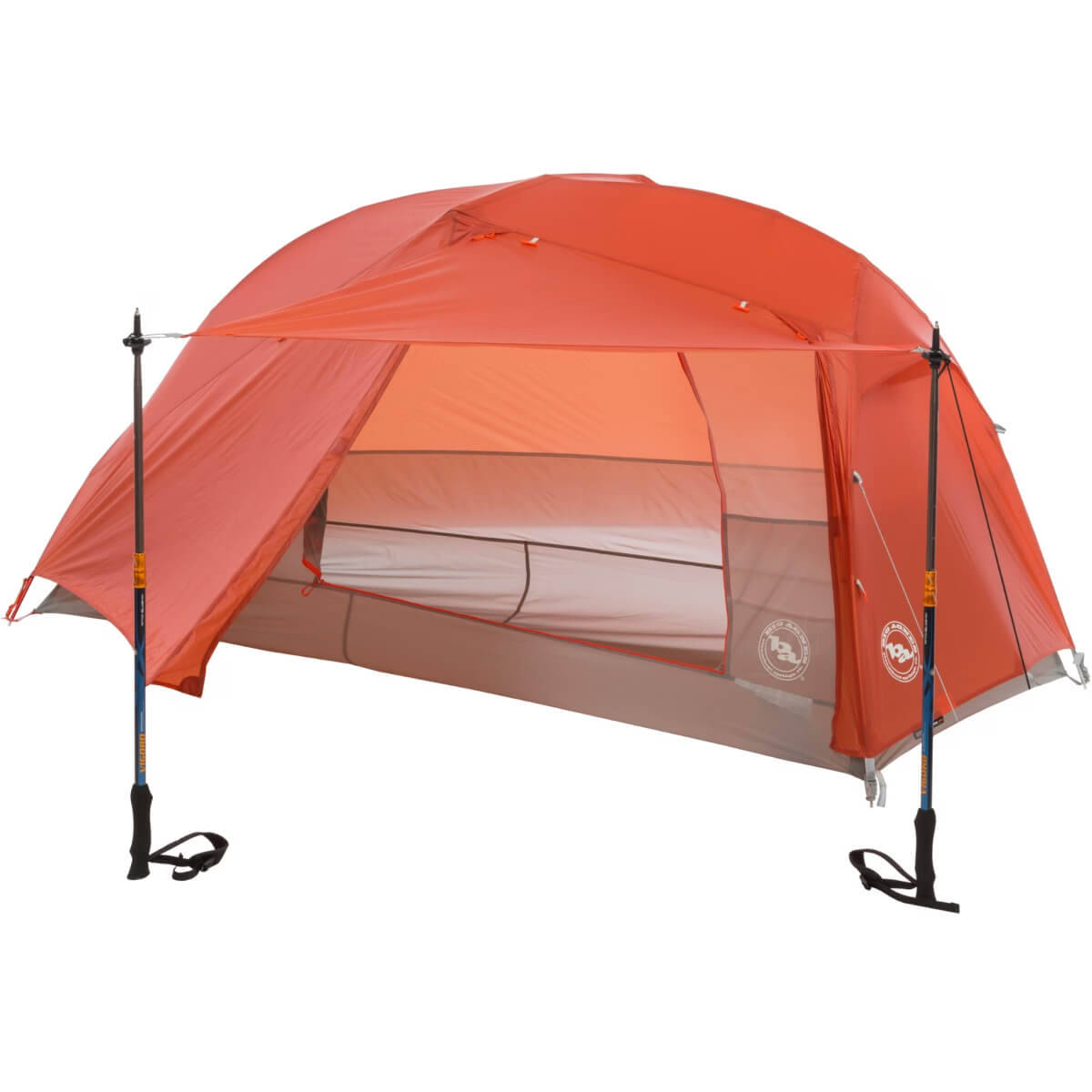
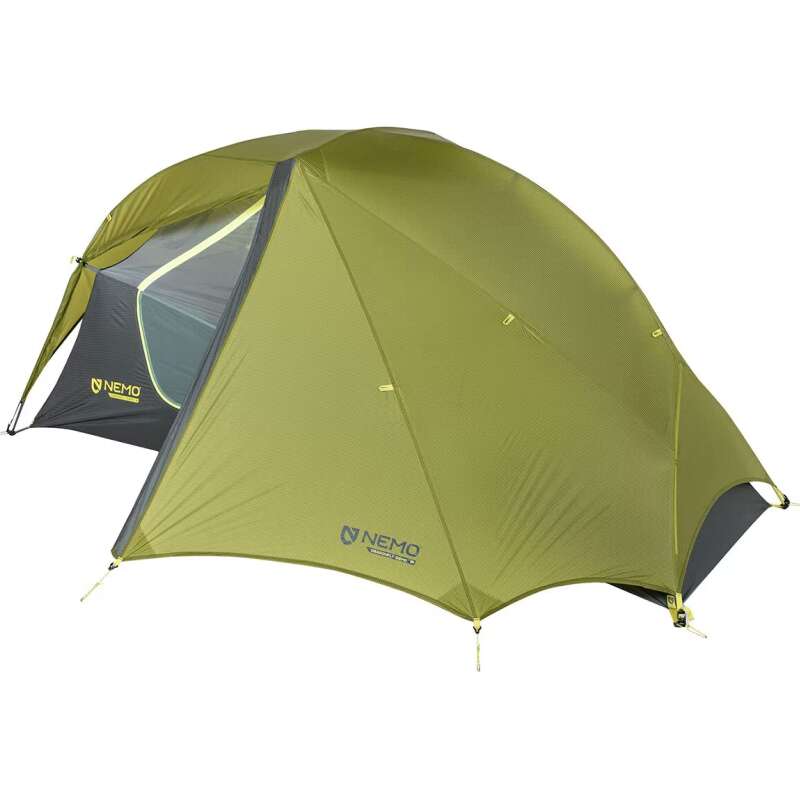
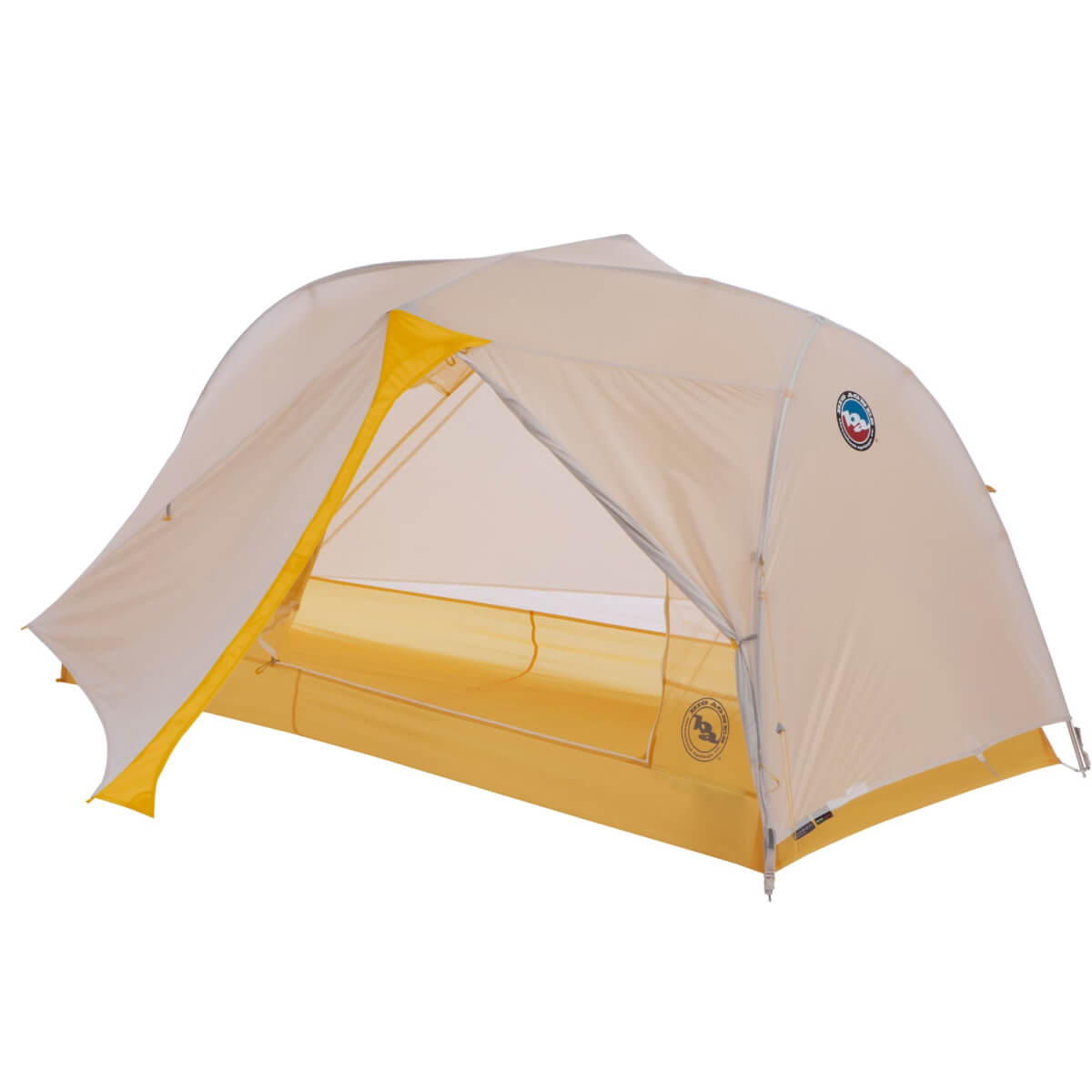
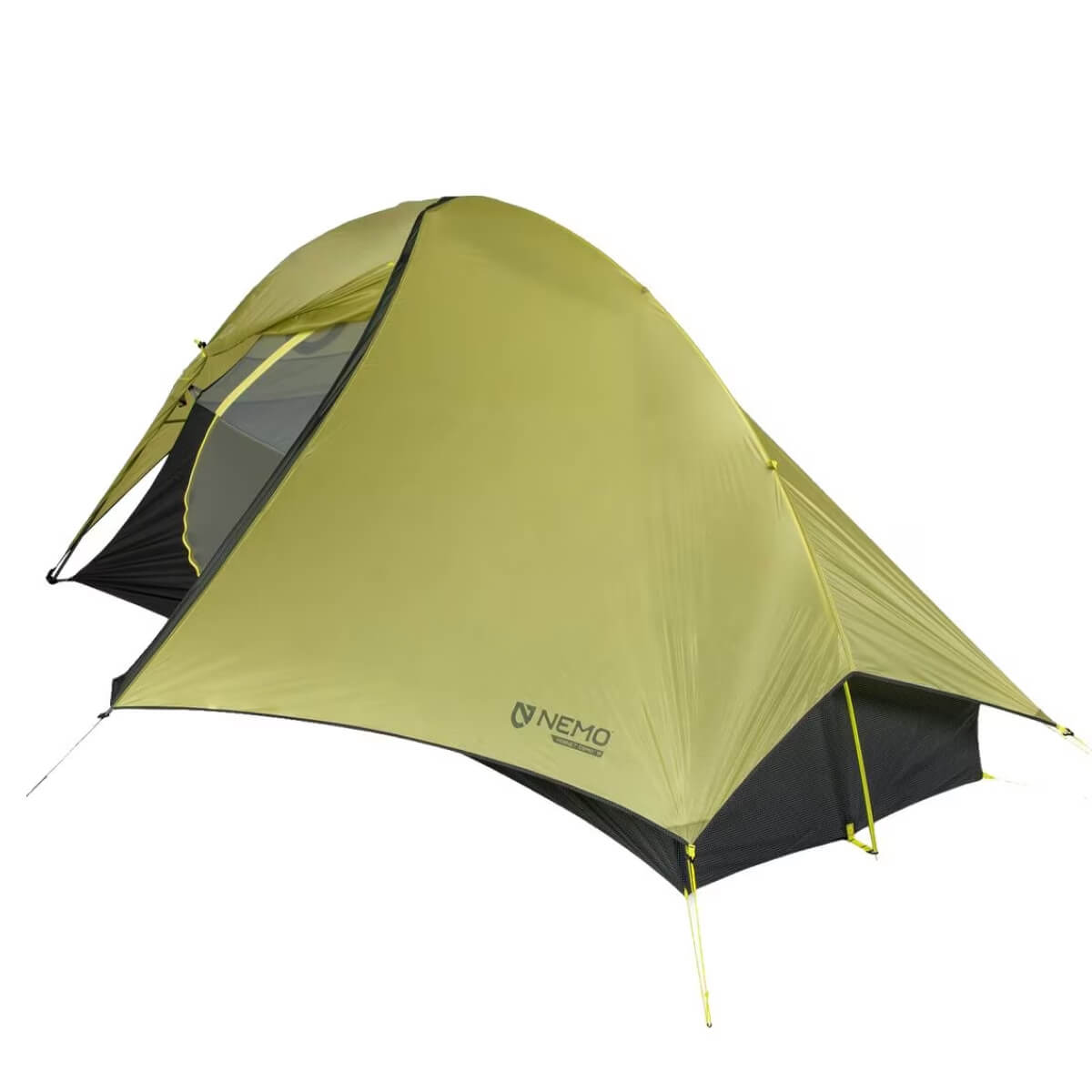
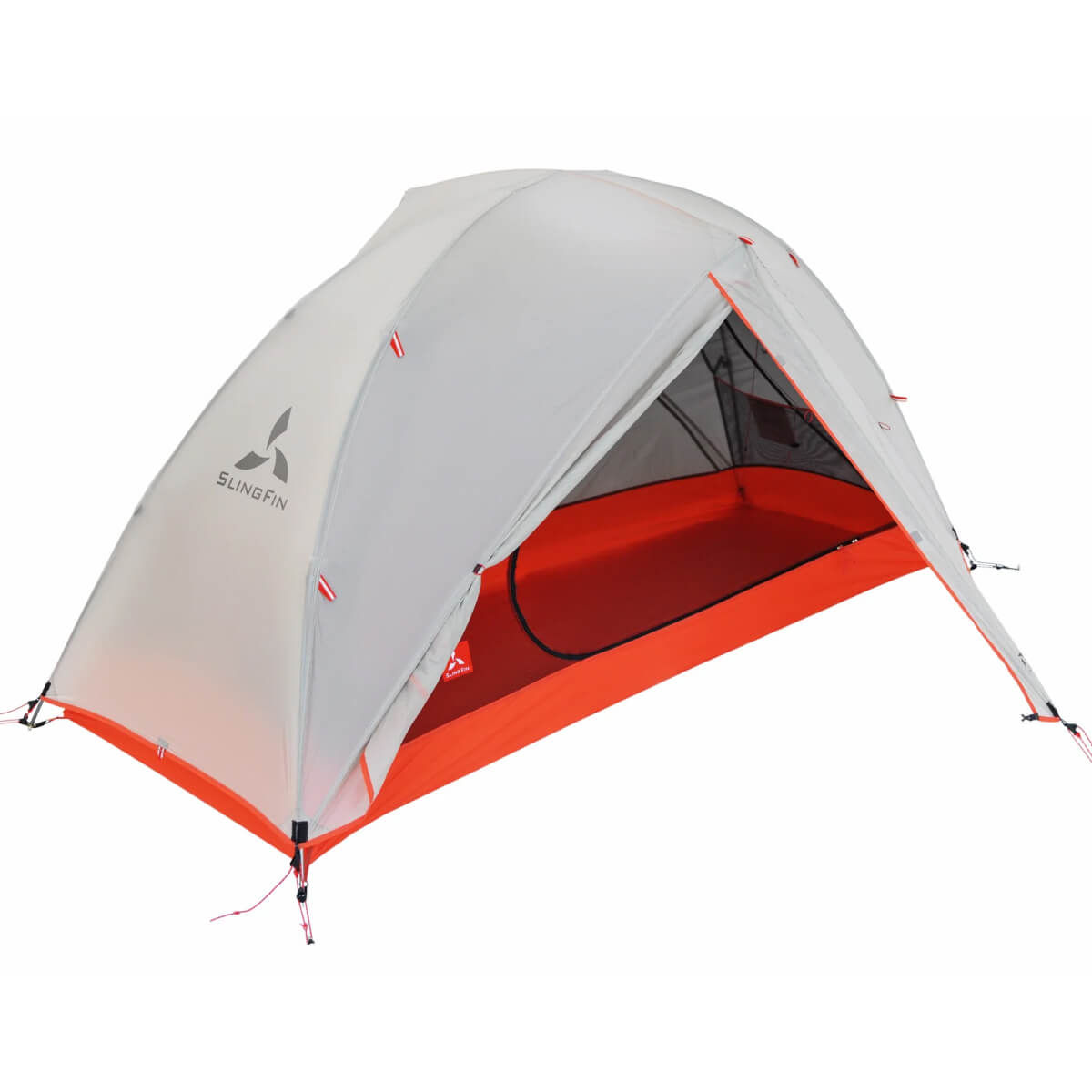
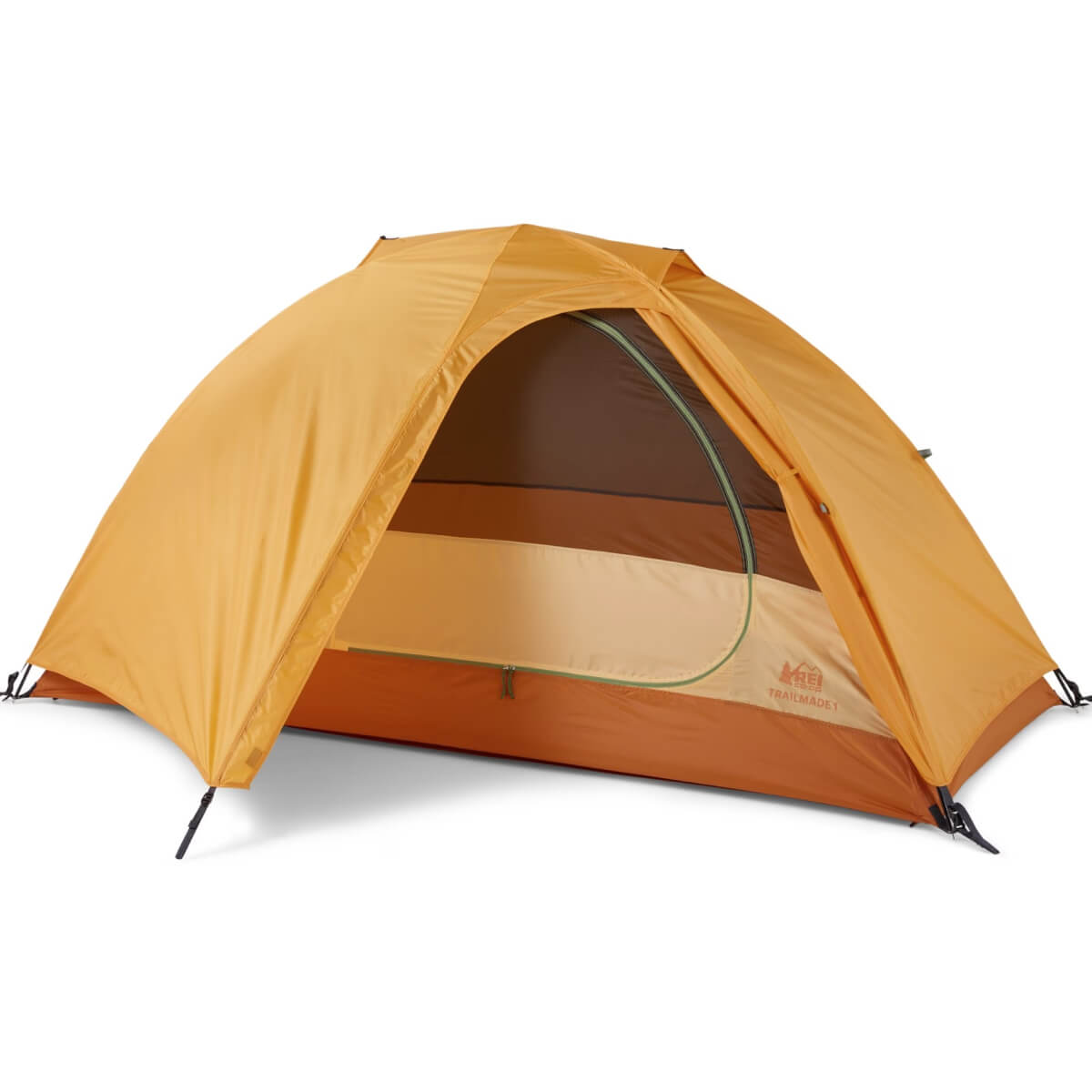
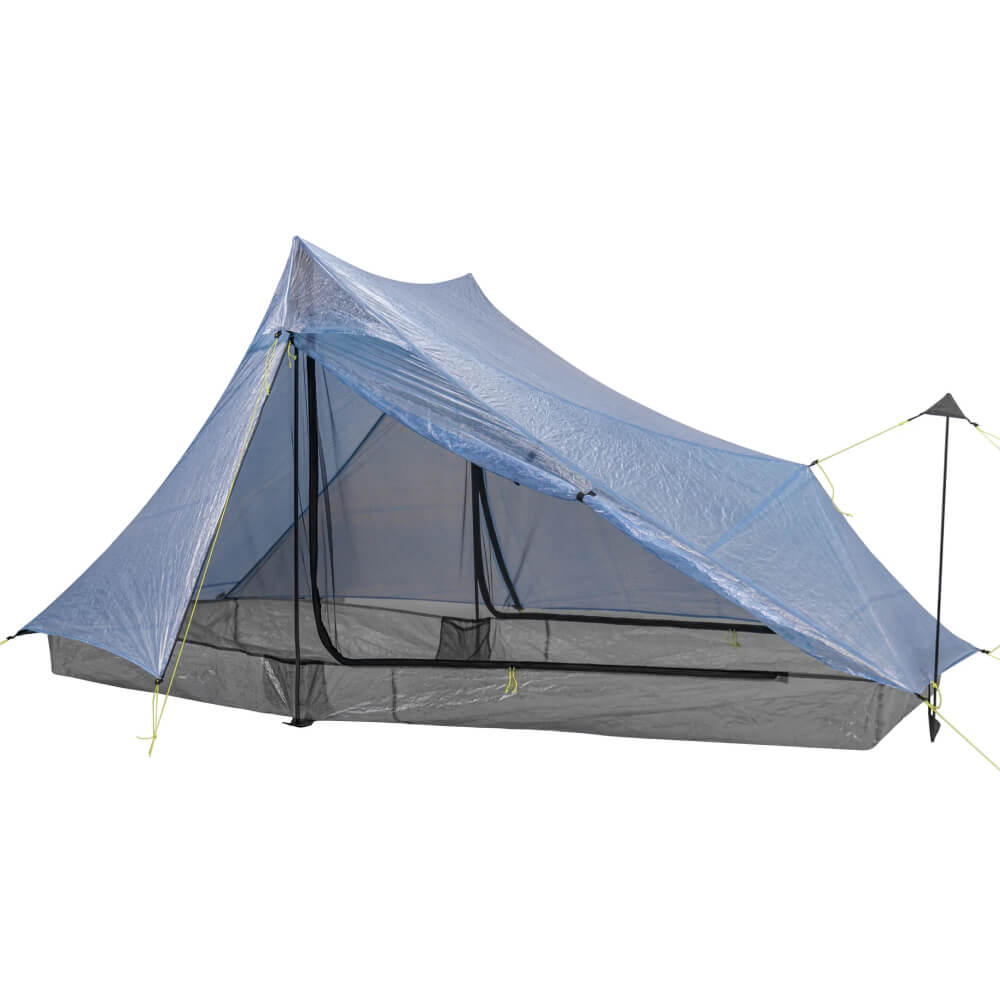
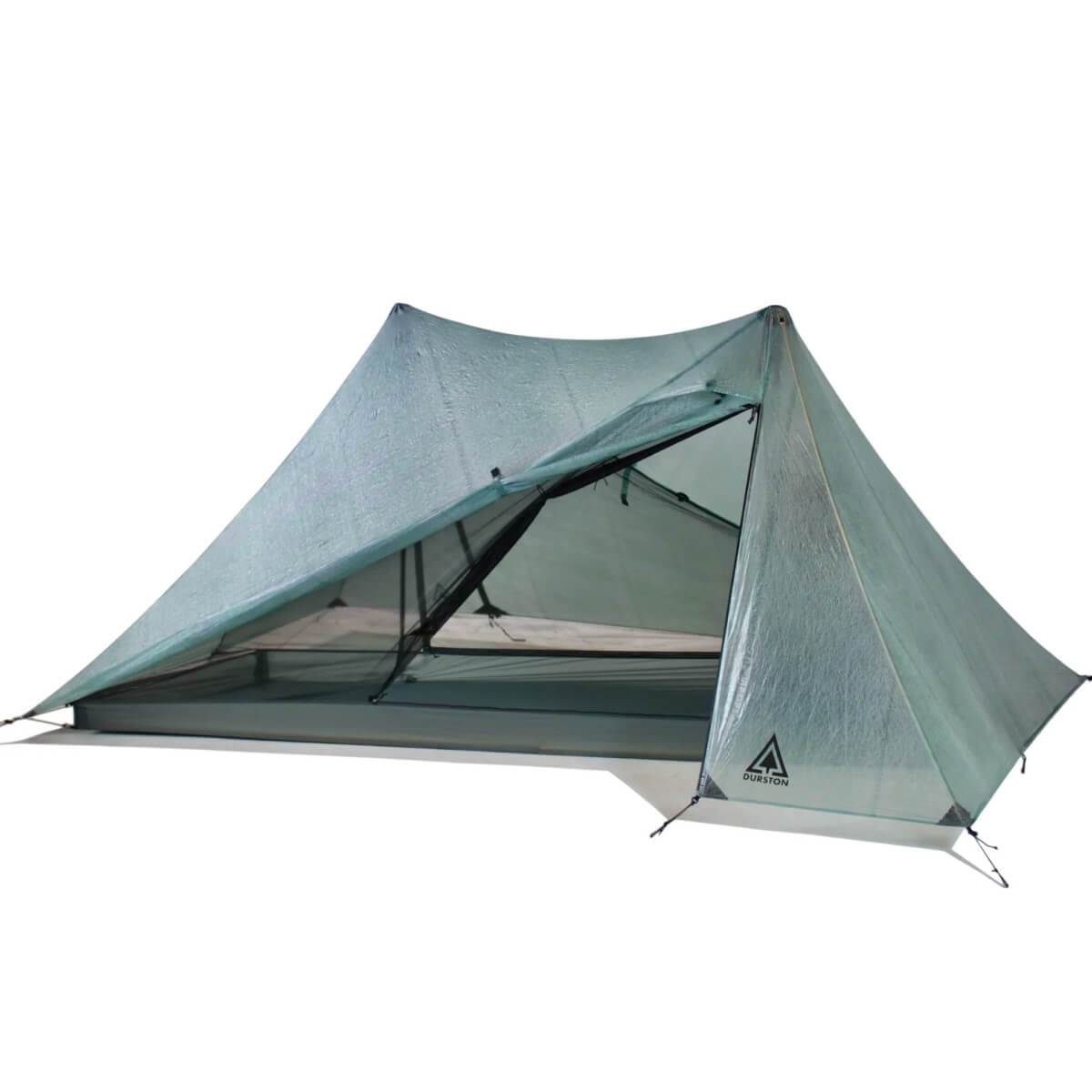
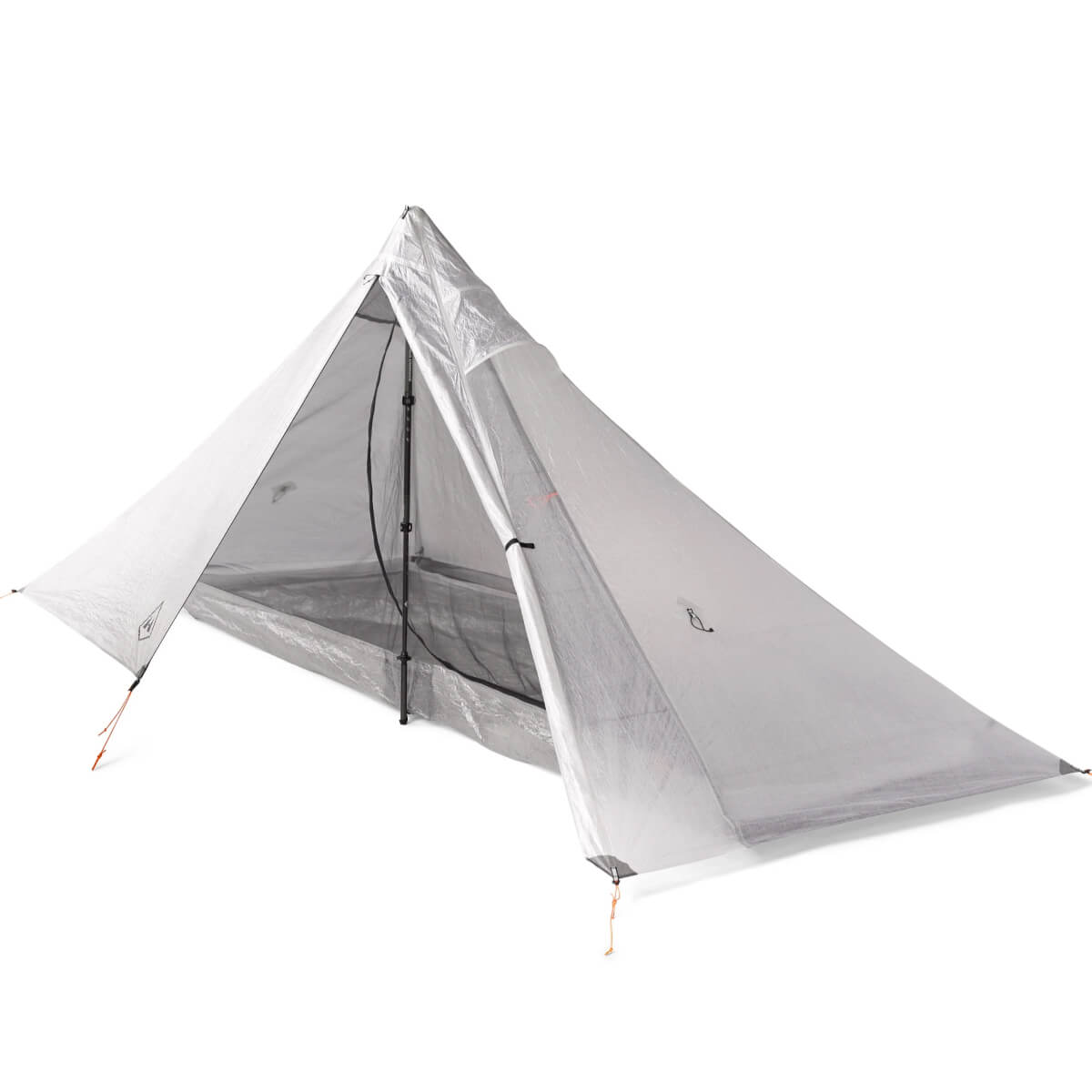
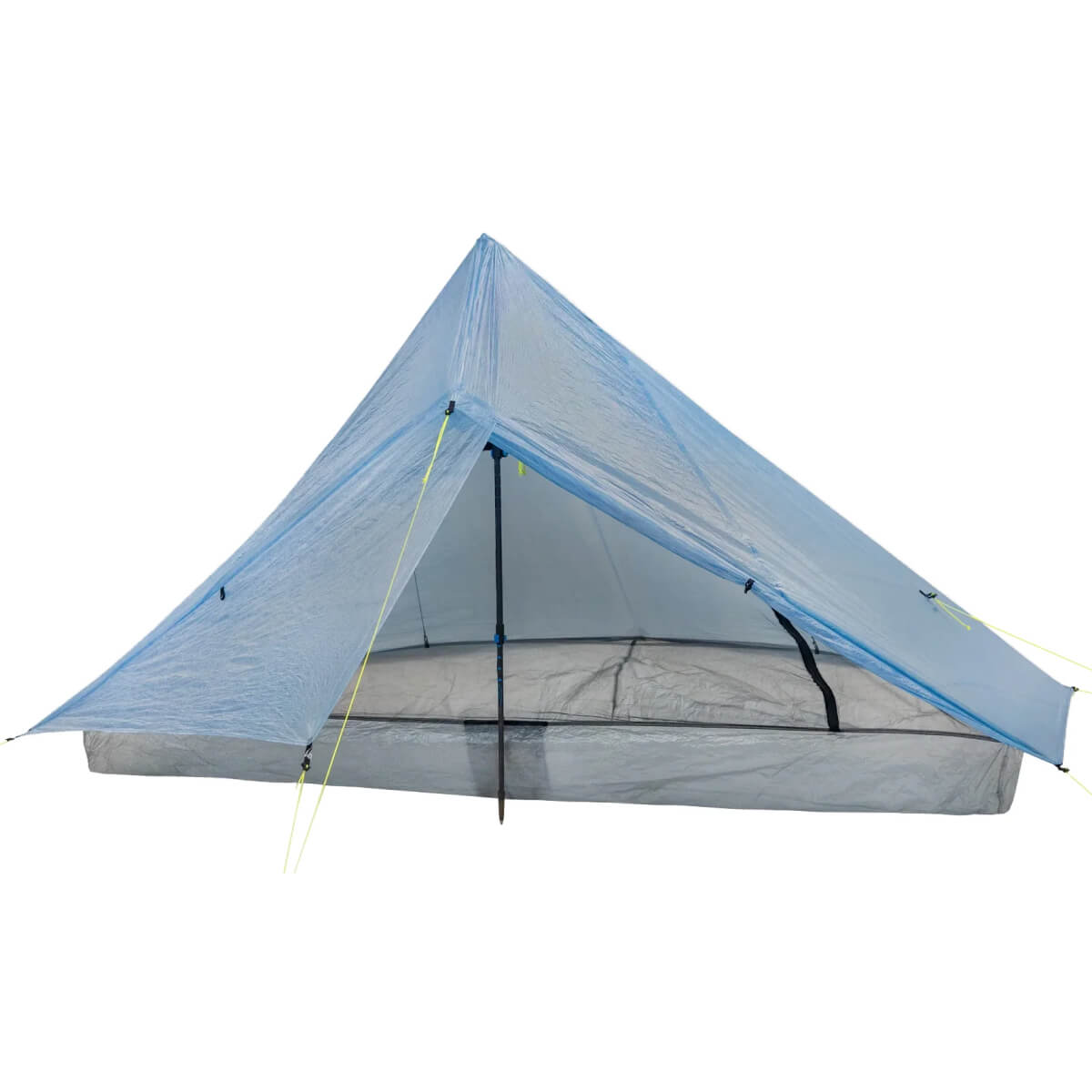
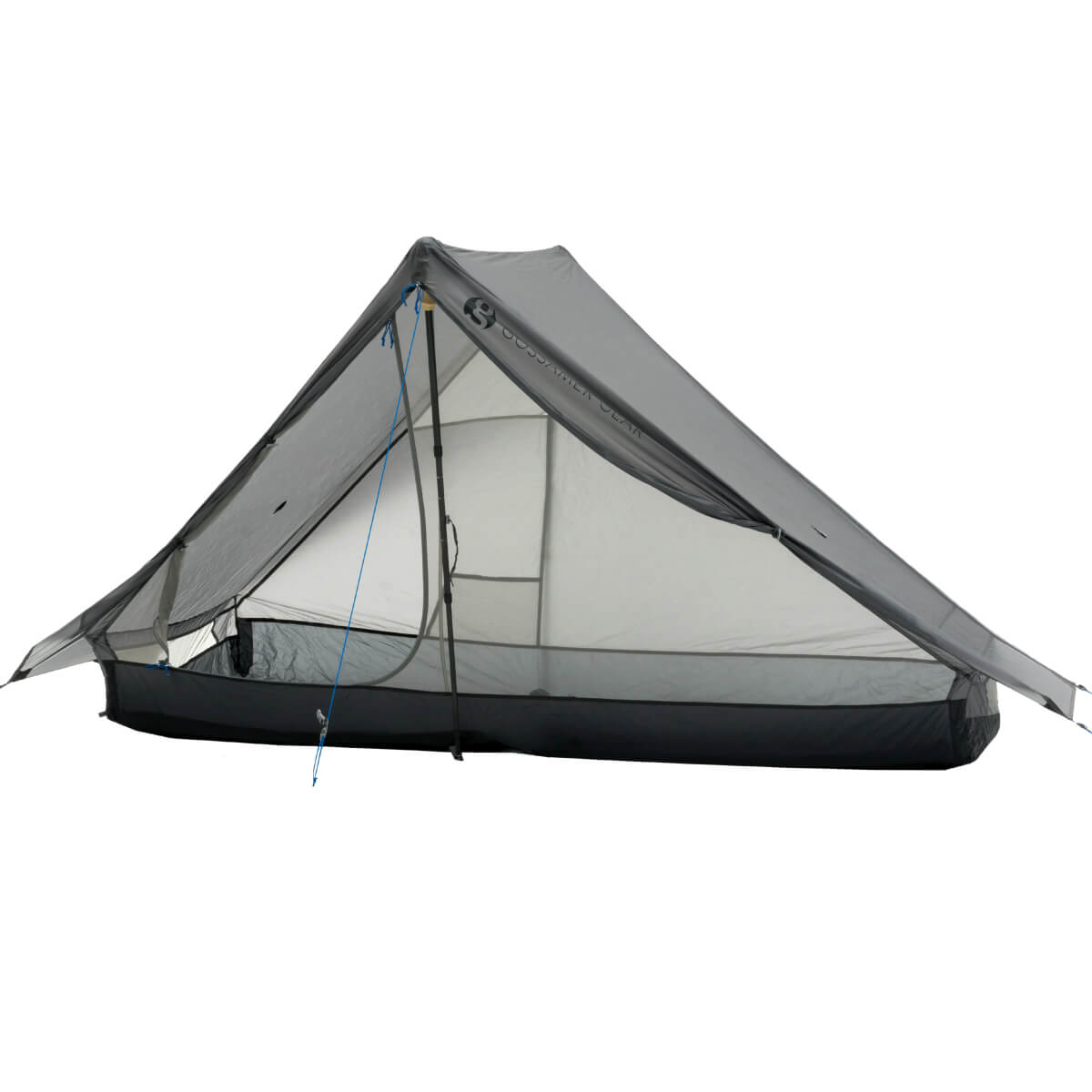
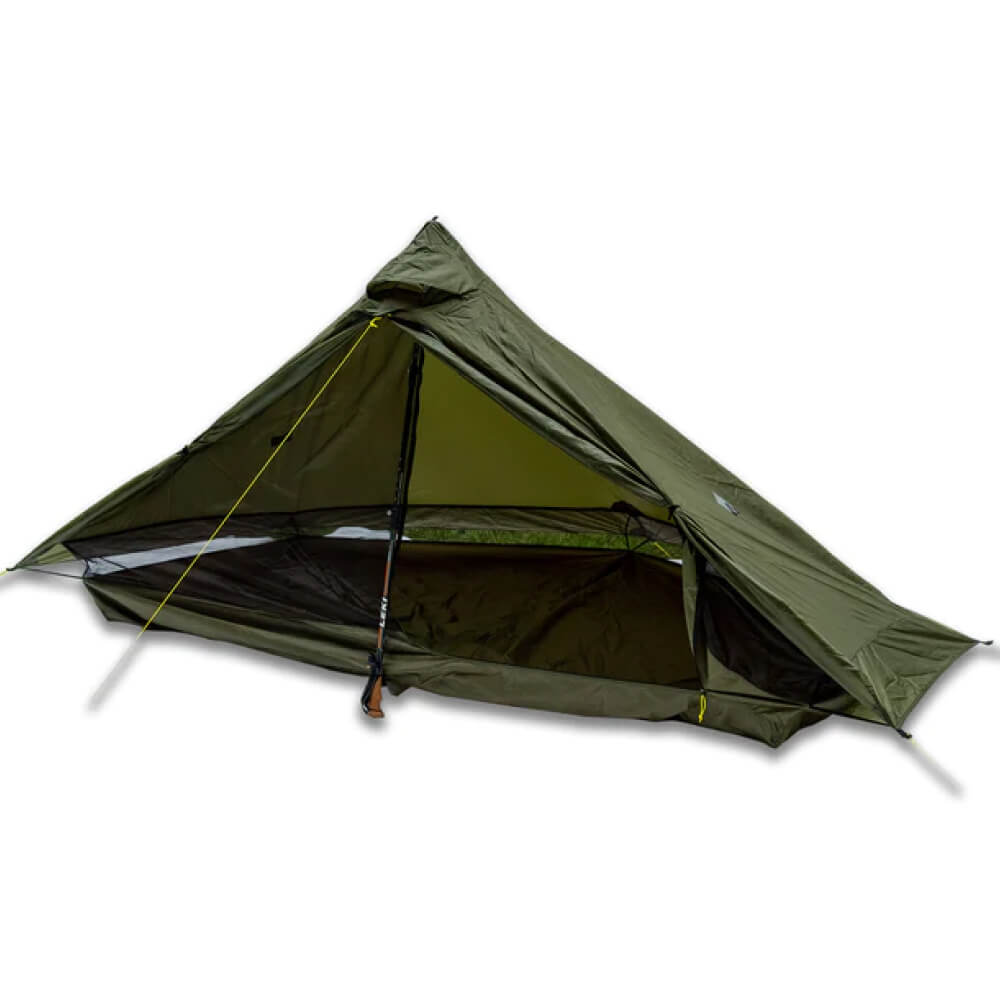


Share this entry